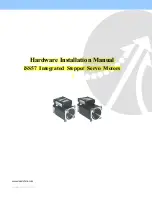
Power Distribution
2-3
Ungrounded Secondary
Grounding the transformer secondary is essential to the safety of personnel
and safe operation of the drive. Leaving the secondary floating allows
dangerously high voltages between the chassis of the drive and the internal
power structure components. Exceeding the voltage rating of the drive’s
input MOV (Metal Oxide Varistor) protection devices could cause a
catastrophic failure. In all cases, the input power to the drive should be
referenced to ground.
If the system is ungrounded, other general precautions such as a system
level ground fault detector or system level line to ground suppressor may be
necessary or an isolation transformer must be considered with the secondary
of the transformer grounded. Refer to local codes regarding safety
requirements.
High Resistance Ground
Grounding the wye secondary neutral through a resistor is an acceptable
method of grounding. Under a short circuit secondary condition, any of the
output phases to ground will not exceed the normal line to line voltage. This
is within the rating of the MOV input protection devices on the drive. The
resistor is often used to detect ground current by monitoring the associated
voltage drop. Since high frequency ground current can flow through this
resistor, care should be taken to properly connect the drive motor leads
using the recommended cables and methods. In some cases, multiple drives
(that may have one or more internal references to ground) on one
transformer can produce a cumulative ground current that can trigger the
ground fault interrupt circuit.
Summary of Contents for Allen-Bradley 1305-AA02A
Page 4: ...ii Summary of Changes Notes ...
Page 40: ...2 18 Power Distribution Notes ...
Page 48: ...3 8 Grounding Notes ...
Page 68: ...4 20 Practices Notes ...
Page 78: ...6 8 Electromagnetic Interference Notes ...
Page 94: ...Glossary 4 UL Underwriters Laboratories ...
Page 100: ...Index 6 ...
Page 101: ......
















































